Choosing the color of the walls
When choosing a color, you need to consider:
- the intensity of natural light and the size of the windows;
- the color of the furniture set and upholstery;
- the chosen interior style;
- the size of the living room.
If the windows face the sunny side, then the effect of coolness will be created by blue, blue, turquoise colors. If the windows are on the north side, you can fill them with light and warmth using warm colors (red, orange, yellow and pastel shades derived from them: mustard, peach, ocher).
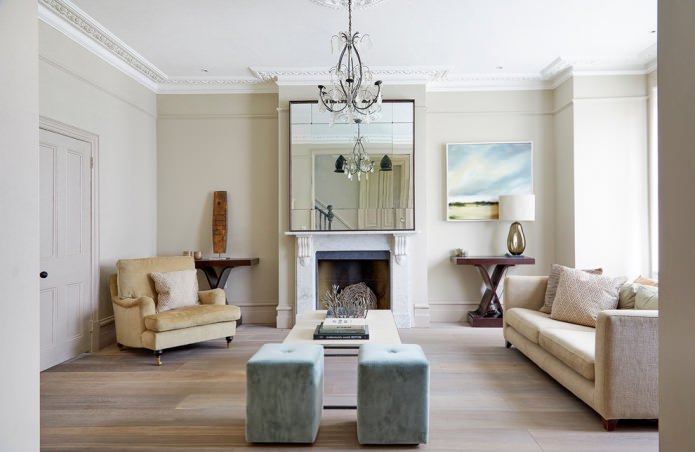
The photo shows a living room, where the emphasis is on a framed mirror and a fireplace. Light colors in the design, glass and mirrors fill the room with space and allow you to complement the interior with any details.
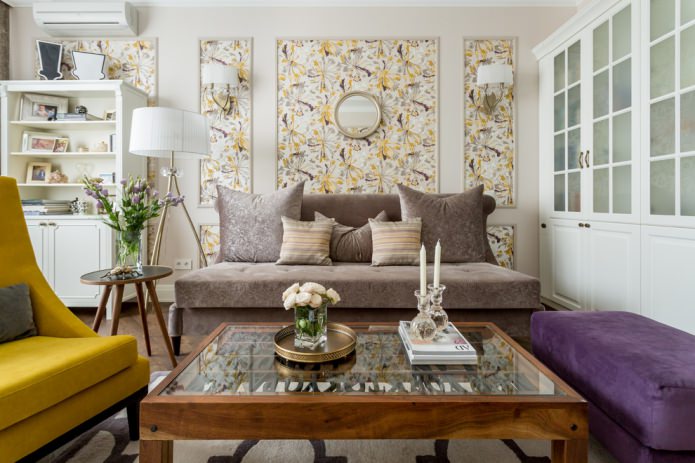
The walls in the living room interior can be a background for furniture or become a bright accent. Light walls in the living room (ivory, milky, light beige, pastel shades of pink and blue) are suitable for visually highlighting dark furniture. If the furniture is light (white or light wood), then when decorating the walls, the color should be deep or bright.
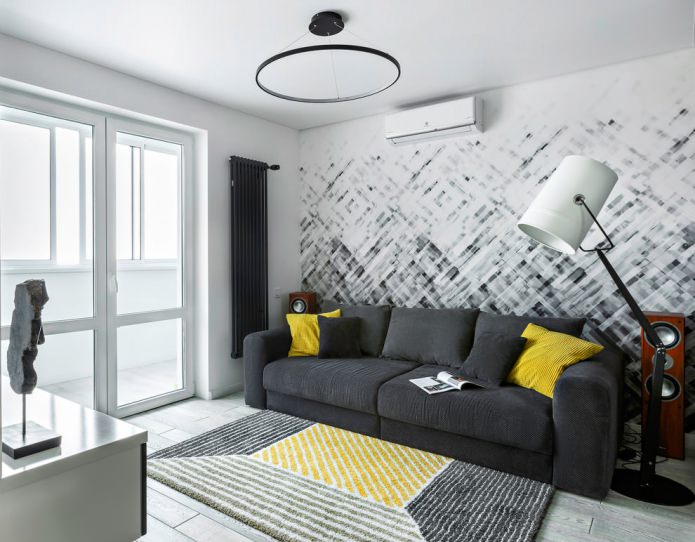
The color should suit all family members, as an option, you can combine several shades to decorate the walls. For example, make stripes, divide the wall in half or paint adjacent ones in contrasting colors.
- White, gray or black in the living room can be basic colors that are complemented by yellow or orange; red or green.
- Shades of beige and light brown are neutral in themselves and can be complemented in the interior with white, pink, turquoise and blue.
- Deep colors (blue, burgundy, wine, purple) are appropriate only if there are several windows and a large space.
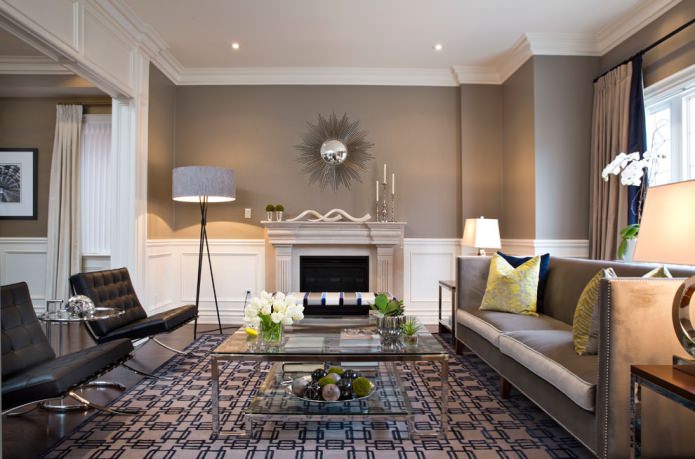
The photo shows the interior of a modern living room, where the walls are painted coffee color, and the bottom is decorated with white panels. The emphasis is placed only on the fireplace, which makes the style universal.
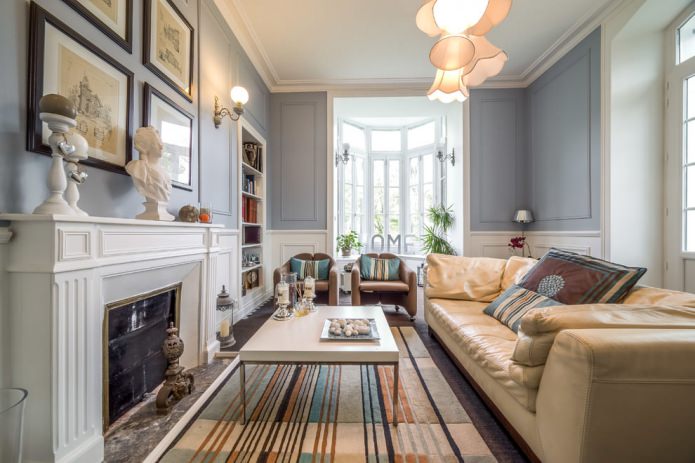
Finishing materials
The choice of materials for decoration depends on the desired final result for a successful combination of textures of the wall decor in the living room and furniture.
- For painting, you need to prepare the walls (they must be perfectly even and smooth, since the paint will emphasize all the roughness and cracks). The paint is not afraid of moisture, is easy to clean, does not accumulate dust and the walls are easy to repaint. Modern special paints do not emit odor and are intended for interior decoration.
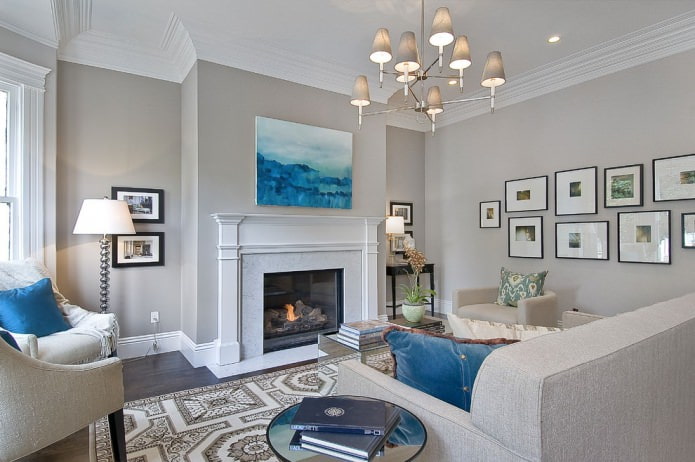
- Wallpaper of different types offers a wide range of colors and textures, this design hides defects and is mounted independently without special tools. Paper and non-woven wallpaper are suitable for the living room. To create an accent wall in the interior, you can use photo wallpaper.
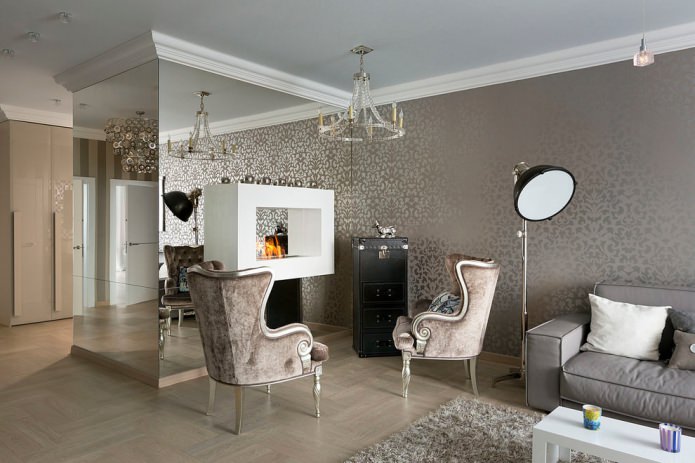

The photo shows an example of decorating an accent wall with photo wallpaper in a modern living room in natural shades.
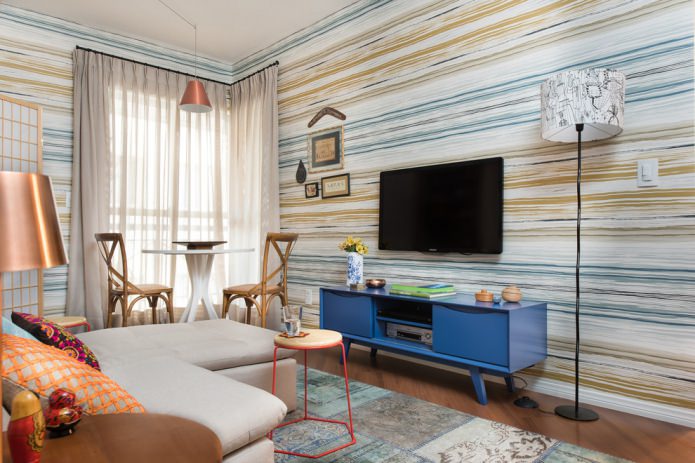
- Decorative plaster in the living room smooths out all the irregularities and will always look unique. The patterns are created with a spatula (bark beetle, tinsel, carpet, etc.) and then the wall is painted and varnished for greater wear resistance.
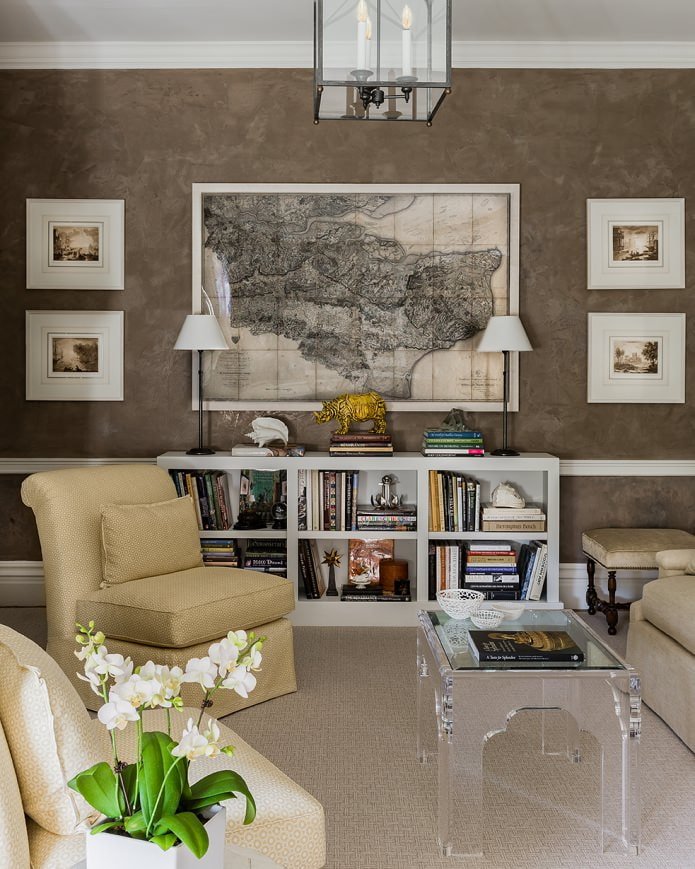
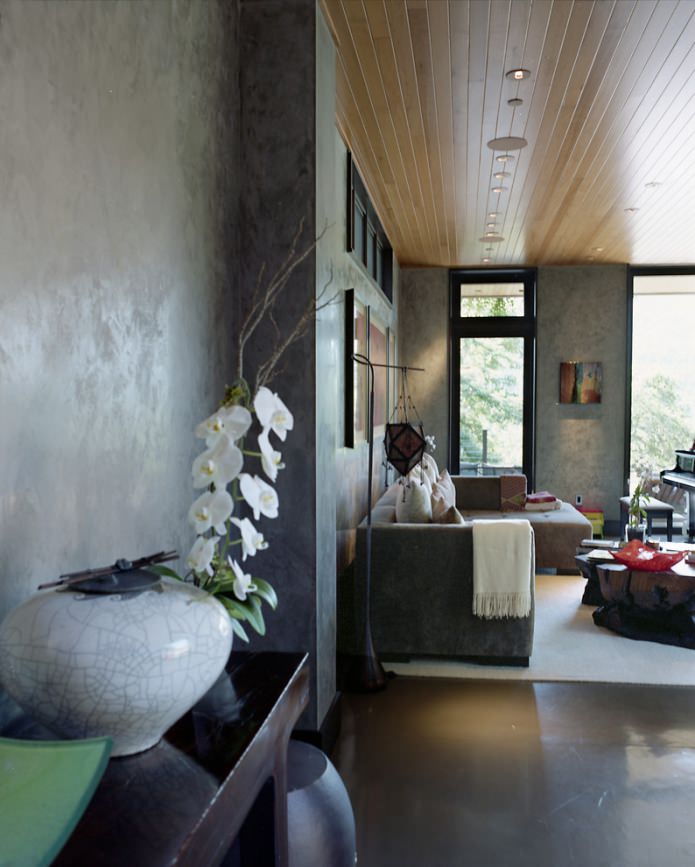
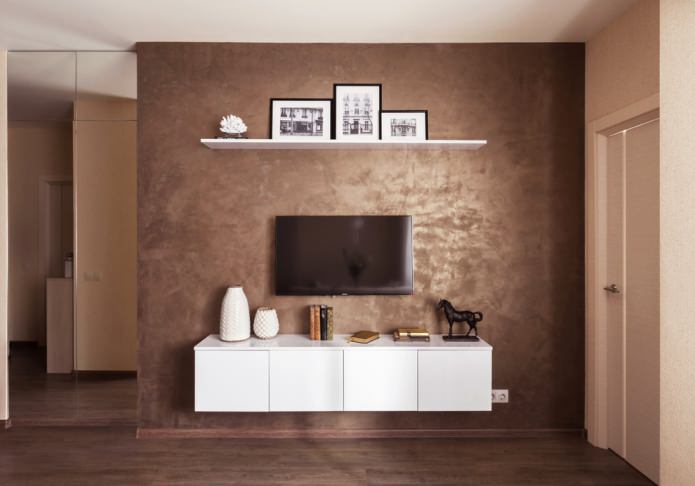
- The wooden design creates a warm and soundproofing. These can be panels, cork or laminate on the lower part of the walls along the entire perimeter, or you can cover only the accent wall in the interior with wood.
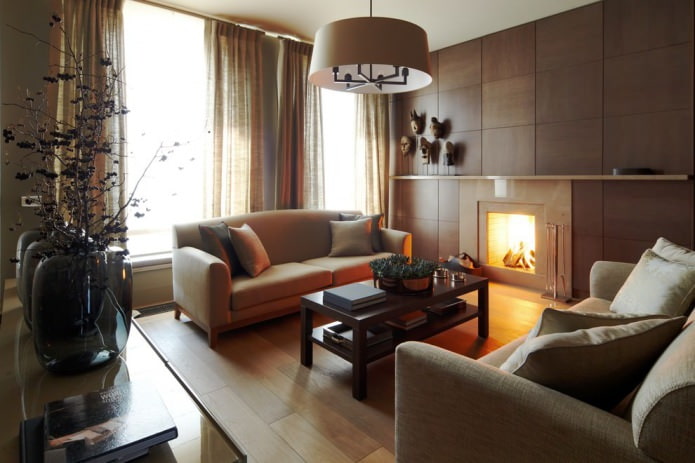
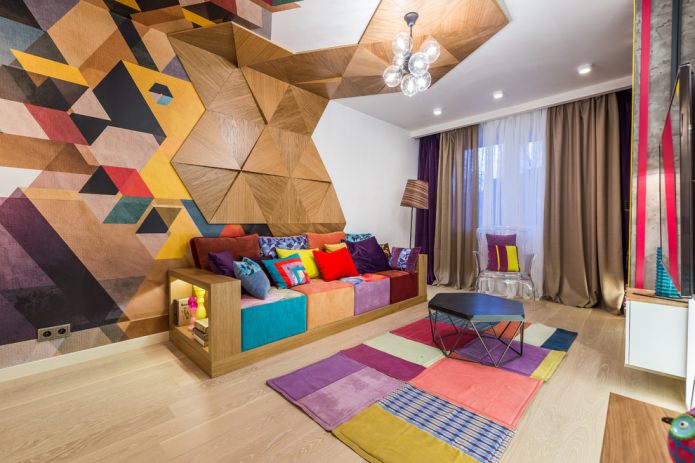
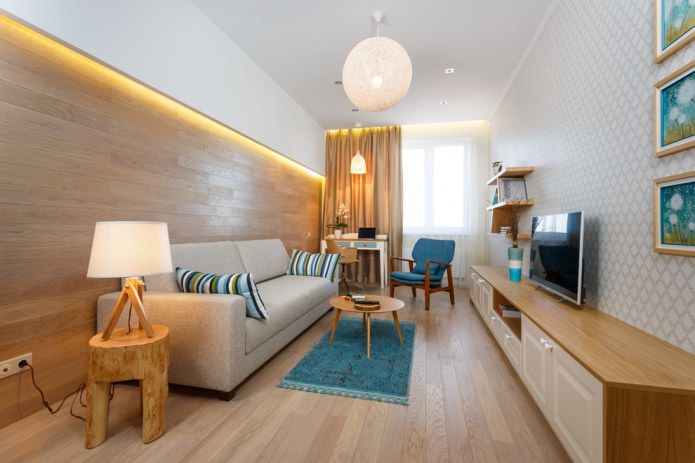
- Decorative stone and decorative brick are suitable for decorating the wall near the fireplace (TV or false fireplace) to create an interior in Scandinavian, country and classic style. Such cladding is not afraid of moisture, is cheaper than natural stone and does not create additional load.
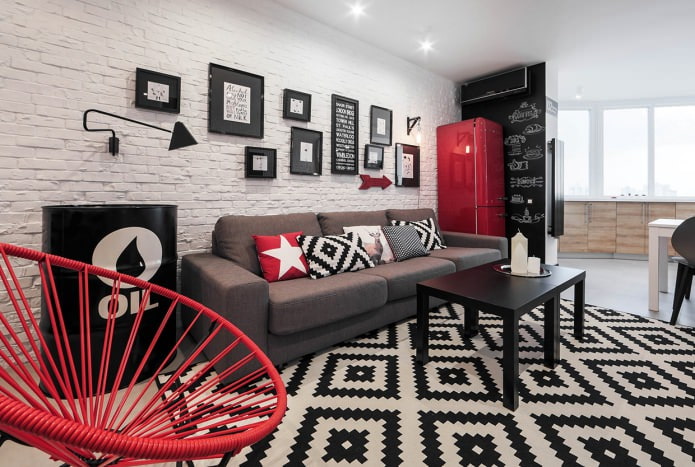
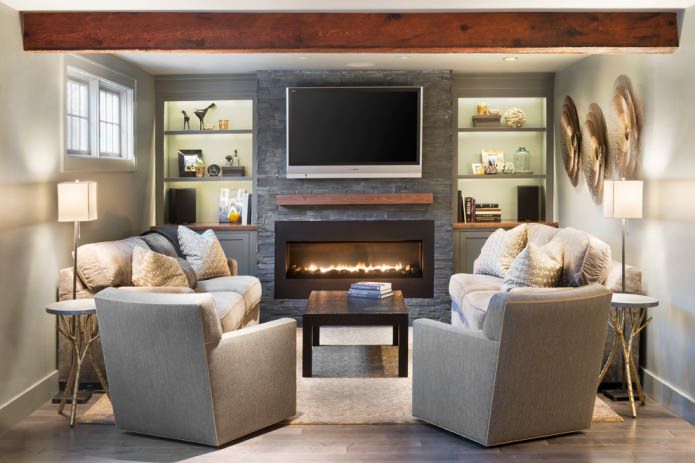
- Soft panels are suitable for decorating the wall near the TV or above the sofa, they will help to place accents, hide defects, create sound insulation. Leather, leatherette, fabric are suitable materials. Sintepon holds its shape better, and foam rubber is suitable for creating a softer surface.
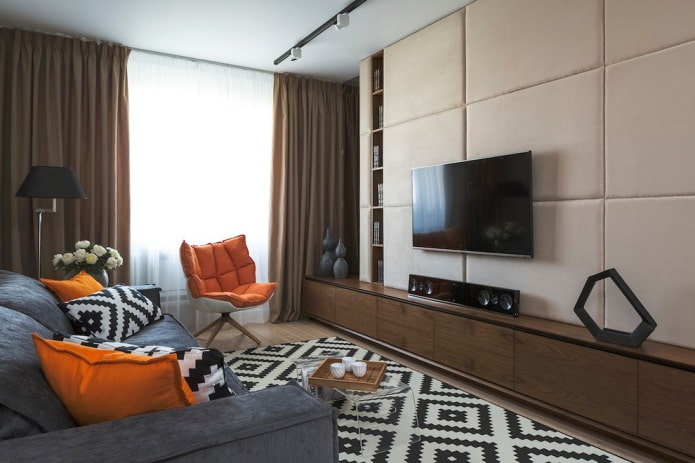
- Mirror decoration is appropriate in a rectangular and small room. This can be a panel, tile or panels of a square or other shape. Light colors and the reflection of a window or doorway will add space to the living room, while the reflection of an adjacent wall or furniture, on the contrary, will reduce the space.
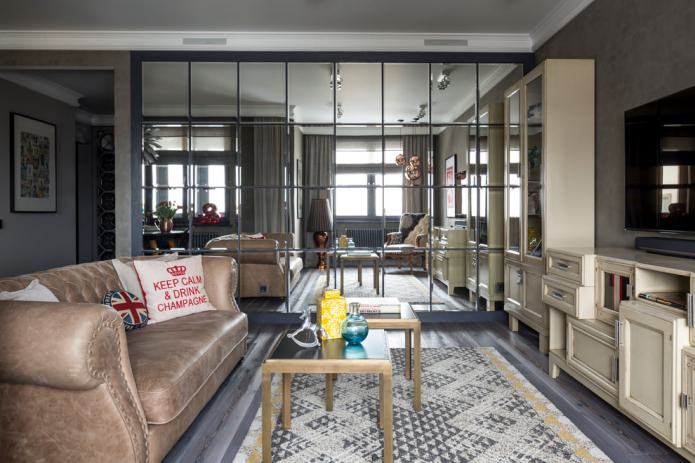
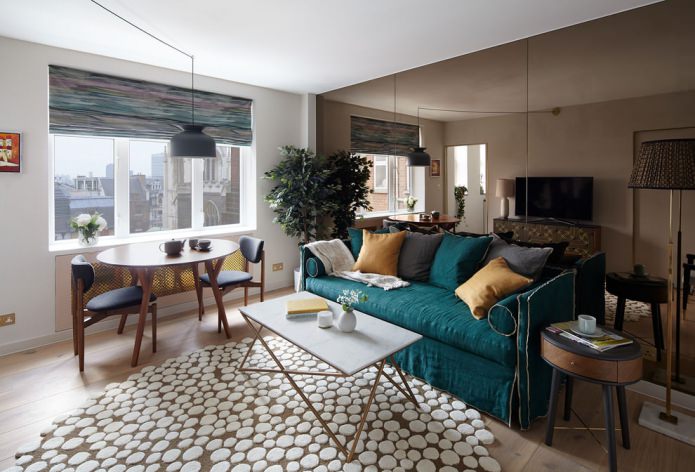
- 3D wall panels in the design of the living room with bas-relief and high relief are suitable for creating an accent even in the tone of the main walls, are easy to attach and do not require additional alignment. There are wooden, glass, plastic, MDF, plaster.
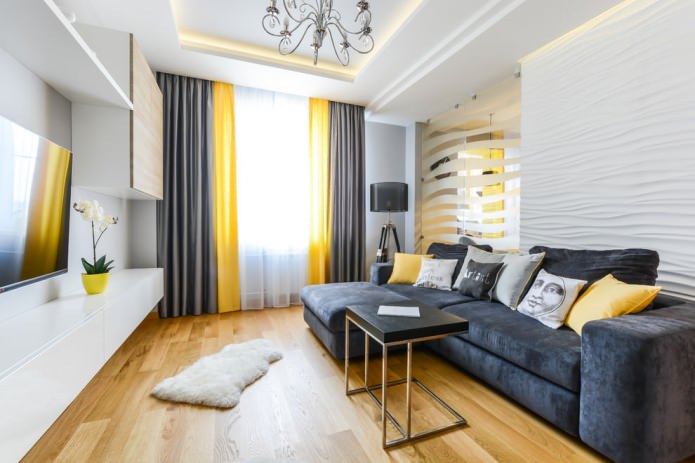
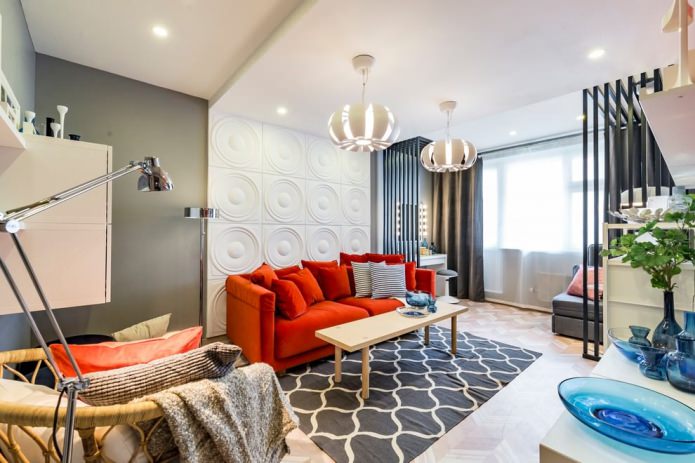
Features of combination
Most often, the living room is the place where you can show your imagination in the interior by combining colors and textures to create a unique design for the walls in the living room and highlighting zones.
For example, the area near the fireplace or the place for receiving guests can be faced with decorative stone or laminate, and the recreation area ⎯ wallpaper or paint. The banquet area can be decorated with paint or plaster, and the area near the sofa ⎯ with liquid wallpaper.
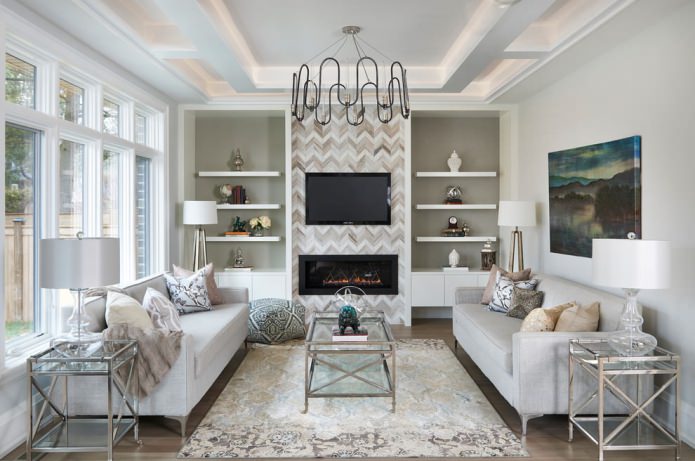
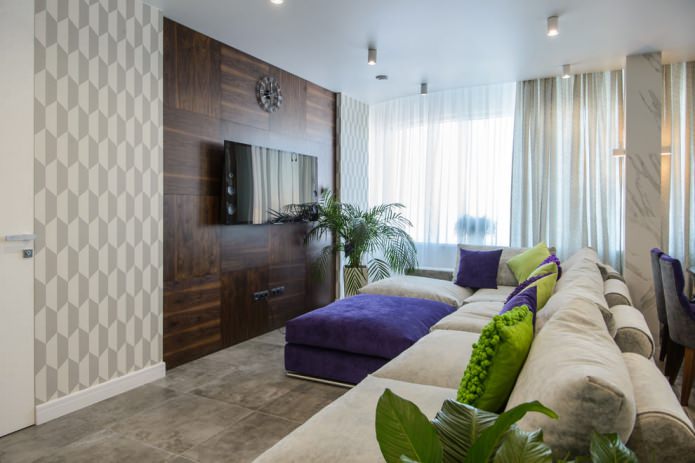
Modern designers welcome any experiment in colors and textures, but if you do not want to take risks in the design, then it is better not to combine natural finishes with synthetic ones (for example, wood panels or veneer with plastic trim), natural colors (neutral brown, beige, white) with acidic shades of yellow and green.
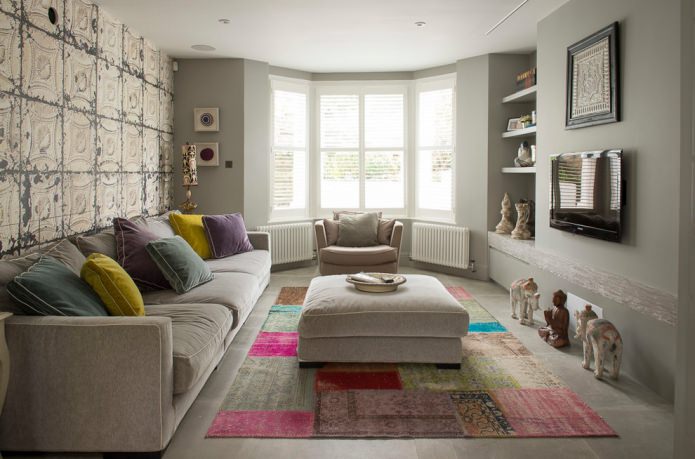
The photo shows an example of creating an accent in the same shade, but with the help of a different texture, panels and paint are combined in the design of the walls.
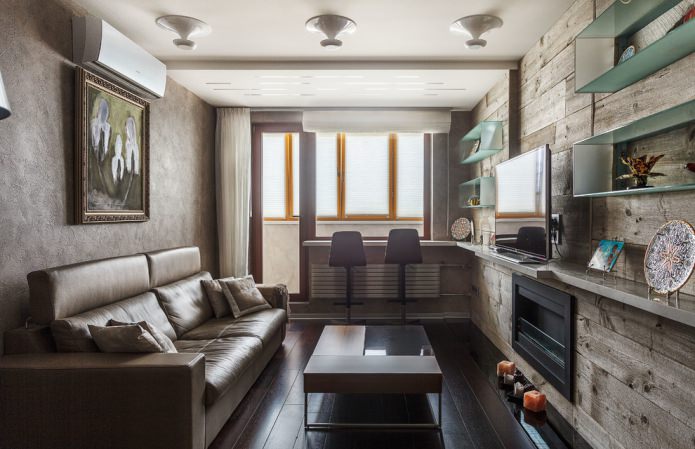
Design of an accent wall
An accent wall always differs in color and texture, its task is to attract attention and visually change the space of the room.
- The accent should be created on the wall that catches the eye first when entering the room.
- If the room is small, you can accent part of the wall or a partition.
- Any material that differs from the main walls will do for decoration.
- The color of the accent wall should echo the color of some interior items.
- You can highlight the wall with color, plot, pattern and texture, but do not combine everything together.
- When arranging wallpaper, you need to stick to one quality, combine patterns with plain ones and maintain a balance between the background neutral color and the highlighted bright one.
- Photo wallpaper or painting will give the interior individuality and an atmosphere of comfort.
- Horizontal stripes in the design will expand the room, and vertical ones will visually raise the ceilings.
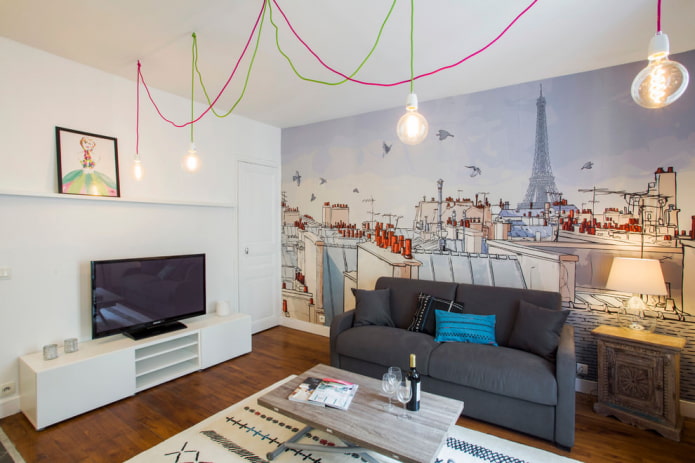
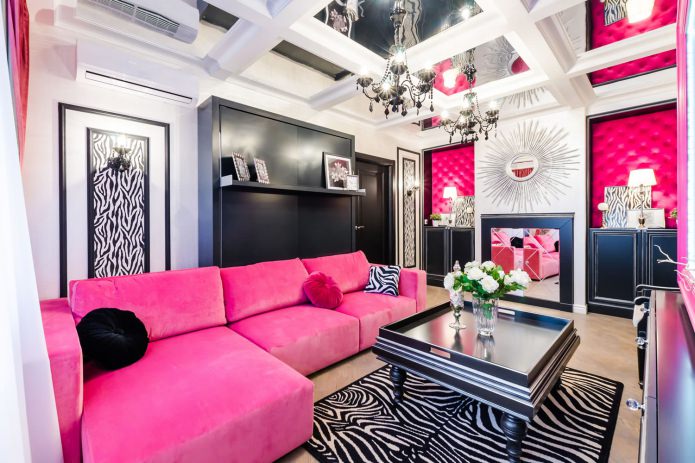
The photo shows an example of interior design in the Art Deco style, which allows you to combine an abundance of gloss, glass and bright colors in the decoration. Pink 3D panels and a mirror on the accent wall complete the style.
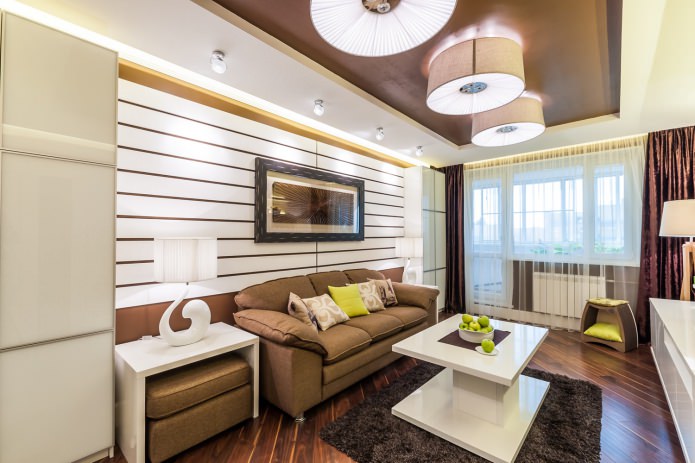
Wall decoration above the TV and fireplace
If it is not possible to allocate a wall for decoration, then you can accentuate the space above the interior items.
- Decorative stone and brick for a classic living room, and metal for a modern design are suitable for decoration above the fireplace. For safety reasons, it is better not to hang carpets and paintings on the wall.
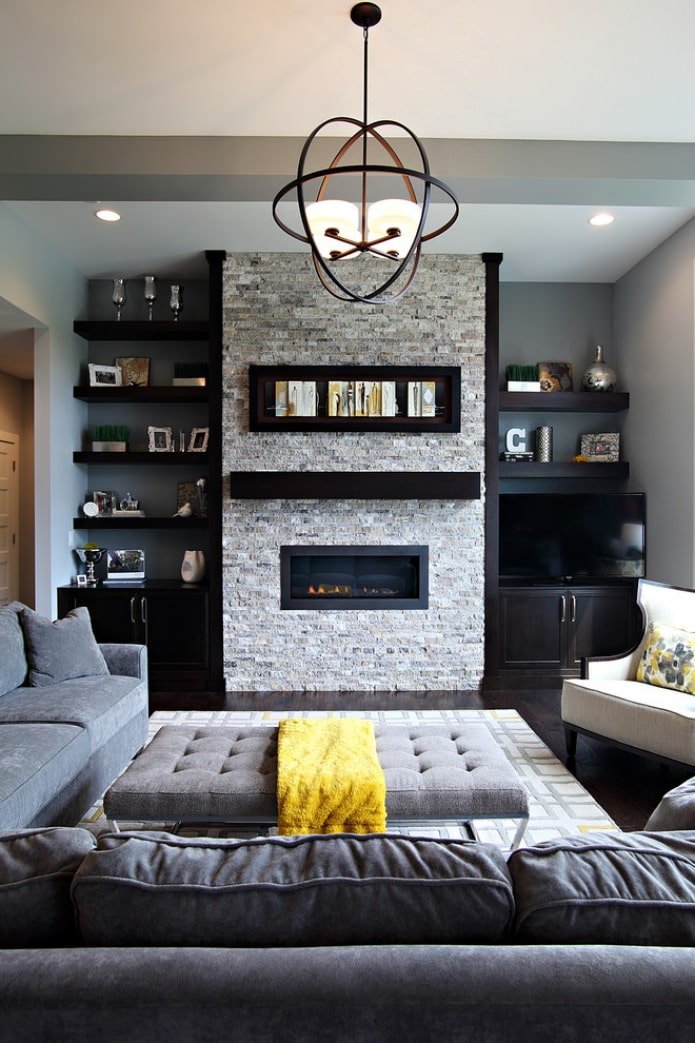
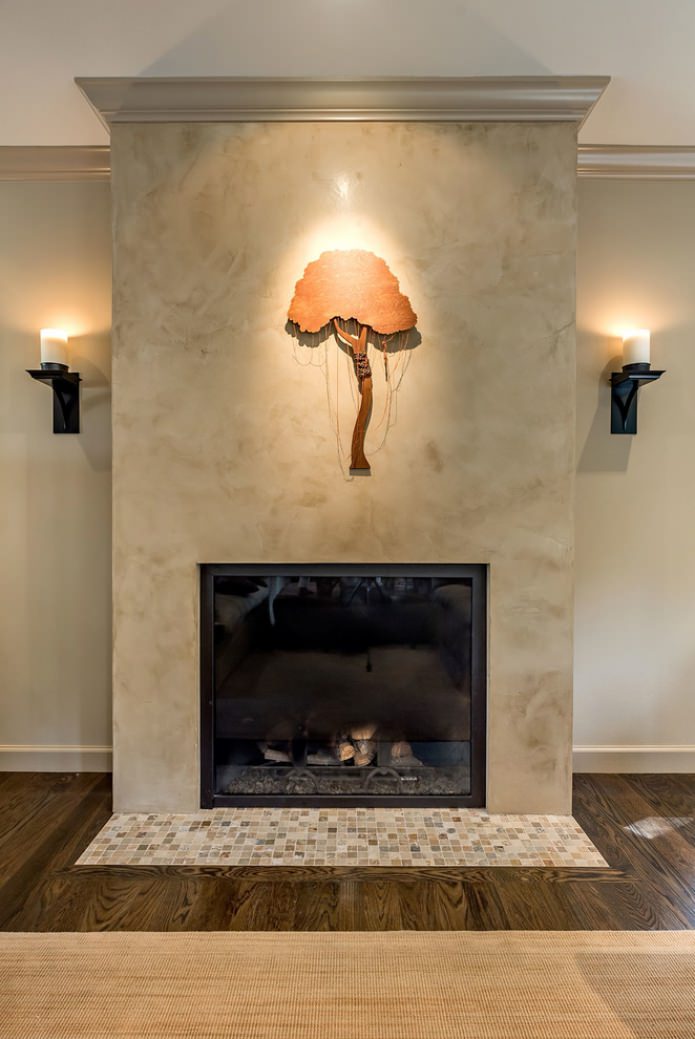
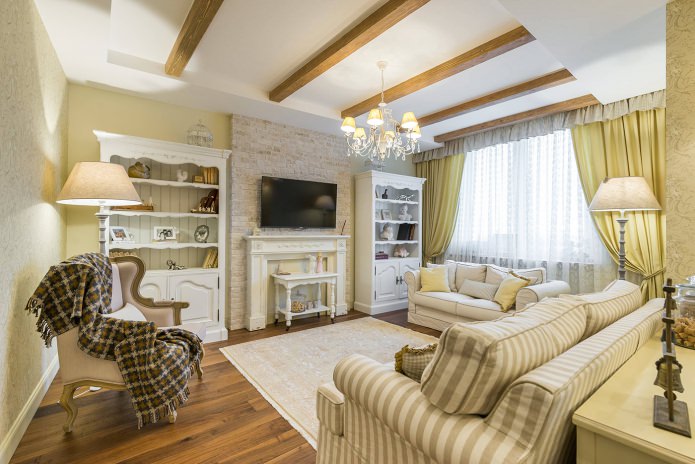
The photo shows the interior of the living room in a rustic style, where it is appropriate to accent the wall with brick.
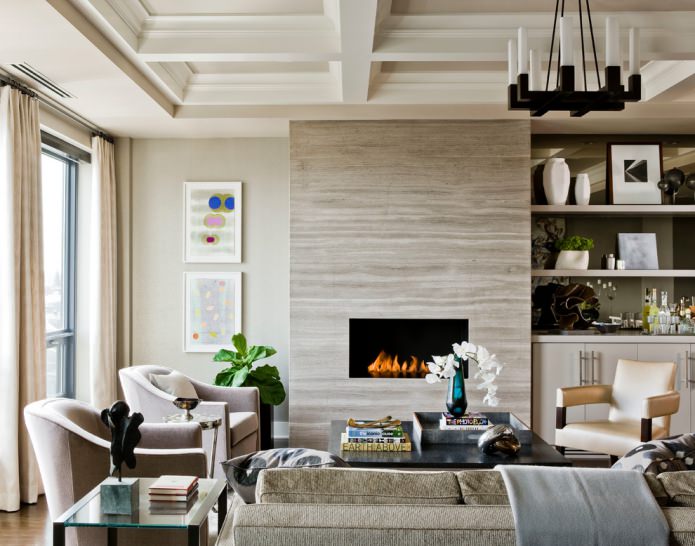
- The TV can be installed in a plasterboard niche with lighting. Such a wall in the interior can be painted or covered with wallpaper. As an addition, you can use a mirror mosaic, a clock or paintings. The design of the wall with a TV in the living room can be decorated in any style, but the main thing is not to overload it with details, since the TV itself is a big accent.
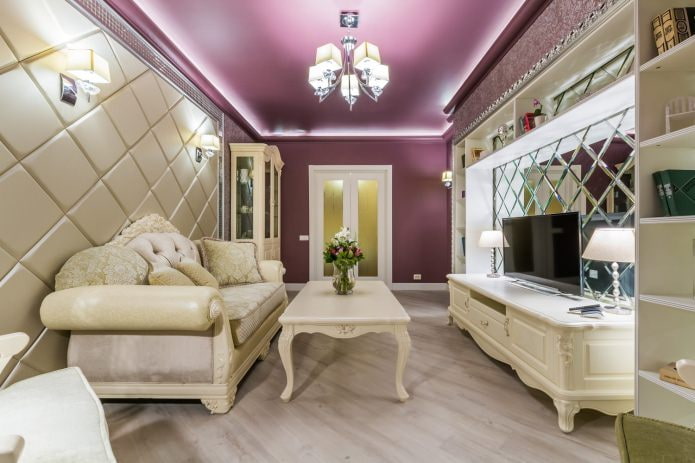
The photo shows the design of a rectangular living room in a classic style, where the effect of wide walls is created due to the glass panels on the accent wall near the TV.

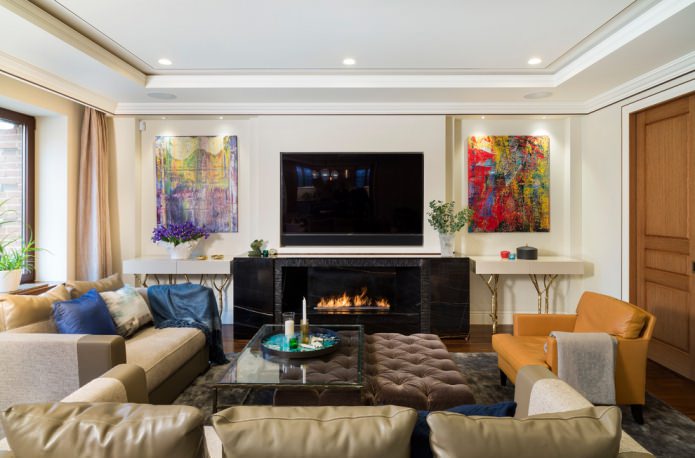
The photo shows a modern room interior that combines an eco-fireplace and a TV near one wall, additionally decorated with paintings.

Ideas for decorating walls in the living room
Based on the style, the decor can be chosen in a wide variety. For example, baseboards, moldings, carpet, mirrors in gold frames, fabric panels are suitable for a classic interior.
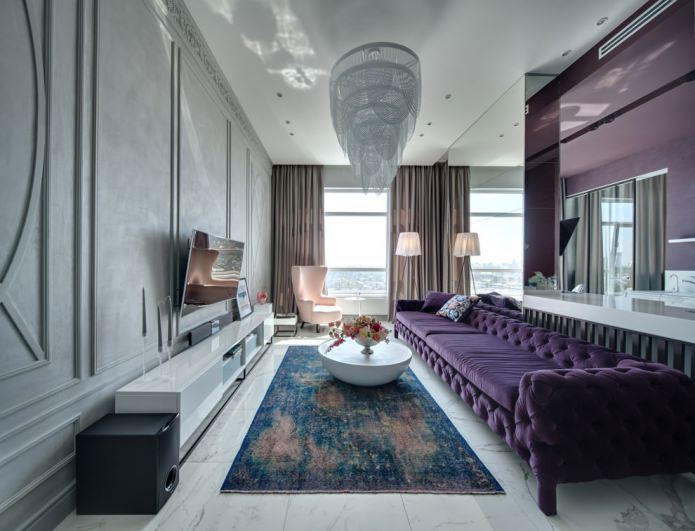
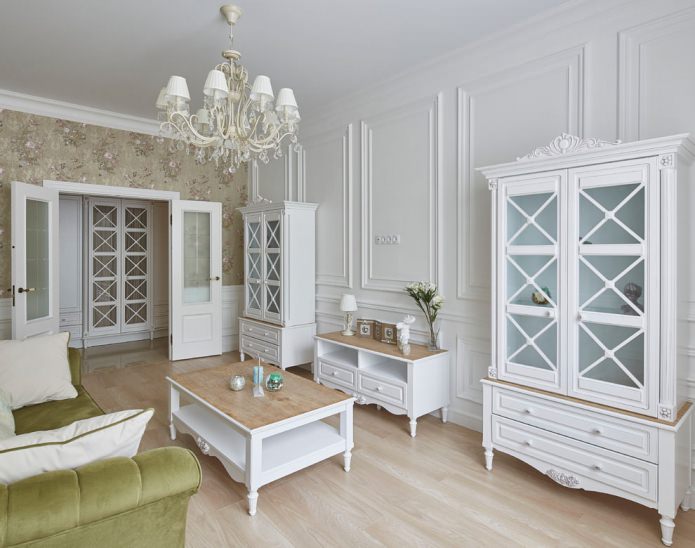
Decorative plates, embroidered items, wickerwork, wooden clocks will be appropriate for country and Provence. Antique interior items (telephone, gramophone, posters and books) are suitable for retro style.

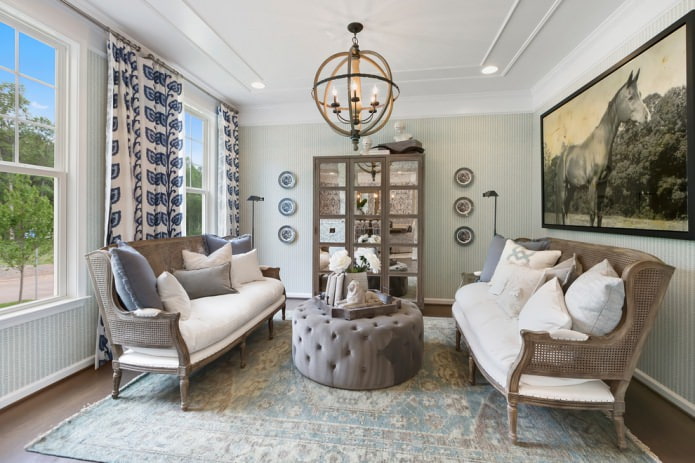
You can make your own family tree, a large photo or attach memorable souvenirs from your trips on the accent wall.
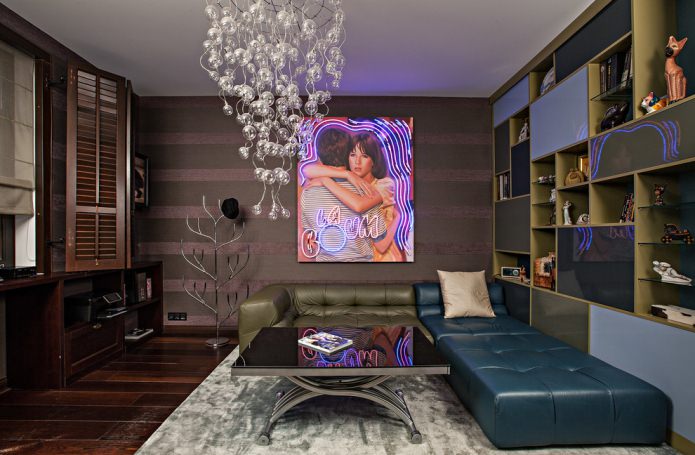
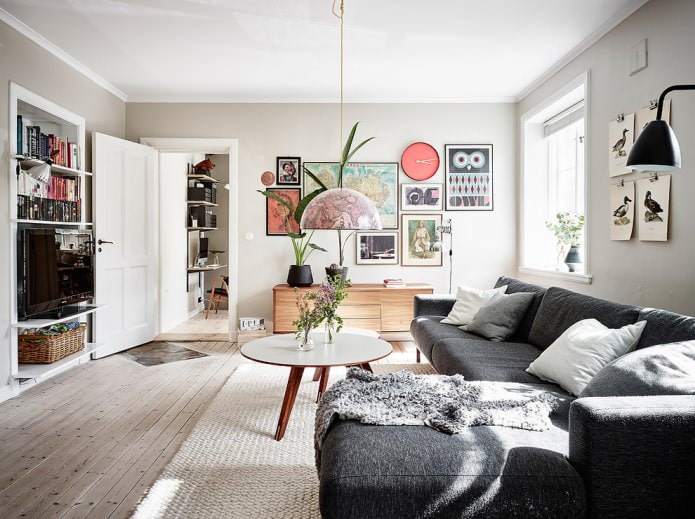
The photo shows an example of how you can decorate a wall with posters, paintings and a map. Such decor is always easy to replace or remove.
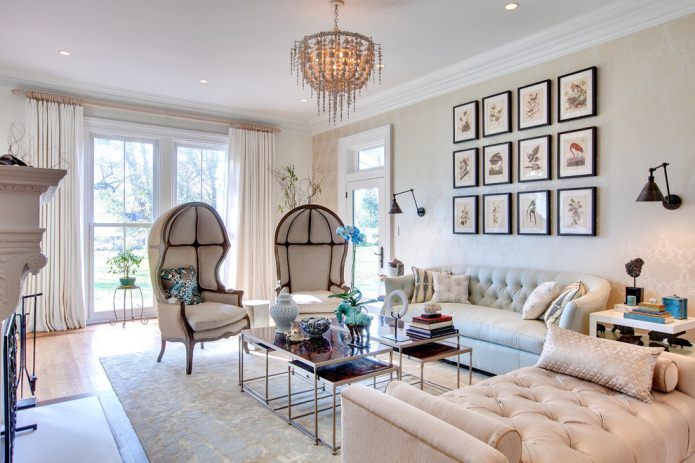
Now reading:
- Your Ultimate Guide to Buying a Used Peugeot 807
- Patchwork tiles for kitchen and bathroom: design ideas and 50 inspiring photos
- 10 unusual options for wall decor instead of a painting that will surprise you.
- Creative Ways to Organize Toys in a Kids Room
- Comprehensive Guide to Buying a Used Opel Vivaro